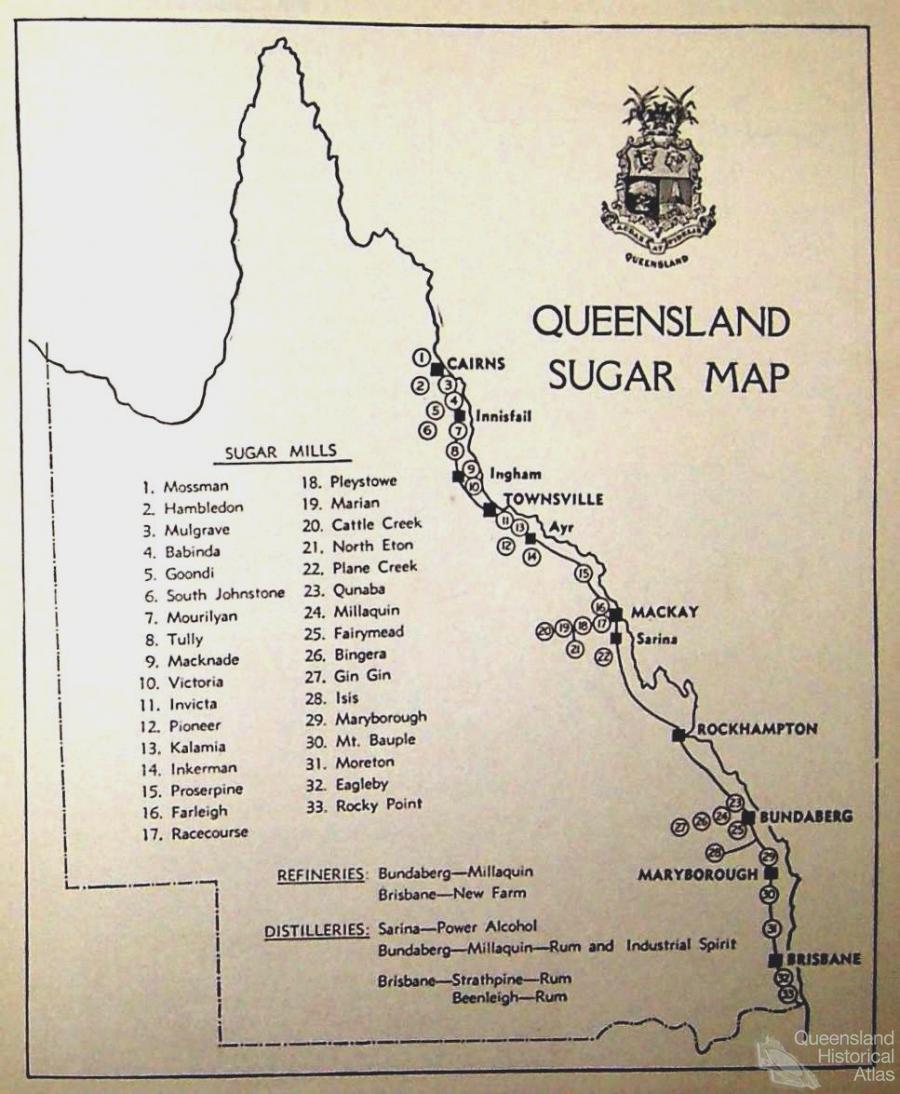Sugar vs The Reef – the story so far

Even though gallery shows are only a small part of what we do as artists, it’s true that presenting an exhibition at a high-profile place like the Art Gallery of NSW can really open up some unexpected doors.
When The Yeomans Project occupied the Contemporary Project Space at AGSNW in early 2014, it popped up on Allan Yeomans’ radar.
Allan, aged 80 or so, is the late P.A. Yeomans’ eldest son. He runs the Yeomans Plow business in the Gold Coast, and like his dad, is an author, inventor, and ideas man.
Anyway, Allan and his wife Christina heard about the show, and decided to come down from the Gold Coast to see it.
In Allan’s helicopter.
Which he pilots himself. That’s how those Yeomanses roll.
It was a great honour to meet Allan and Christina, and the event for which they choppered in (a public discussion with P.A.’s youngest daughter Wendy) turned out to be a wonderful Yeomans family+friends reunion:

On returning to Queensland, Allan and Christina told their friend John Sweet about the project. John is a retired farmer, also getting on to 80. He worked with P.A. in the late 1970s and early 80s on the Keyline redesign of Rugby Run, a huge property a few hours inland from Mackay.
And that’s how John Sweet came to phone me up on the landline (he has no mobile nor email):
“Lucas, John Sweet here, from Mackay. Allan Yeomans told me about your project. I reckon you and Ian might be interested to work with me on something up here in Queensland”.
“Sounds good, John,” says I – “What is it?”
“Well,” says John, “It’s like this. I want to Keyline the entire Great Barrier Reef catchment area”.
Now, I don’t know much about Queensland, but I know it’s big. So after I got off the phone to John, when I finished laughing, I went and looked up the Reef Catchment area. It’s a strip about or 2100km long, and about 424,000 square kilometers in area. And pretty much choc-a-block with sugar farms.
This is a map from 1941. Not exactly up-to-date, I know. But it’s a nice map, and I think sugar cane is grown in much the same areas these days:

And in this next map, you can see how the reef is situated off the sugar cane coast:

According to John, the run-off (from soil sediments, fertilisers, and pesticides) from cane farming in the catchment area is a major source of reef degradation. In this photo, you can see how the big rains of Queensland can flush those chemicals out of the farm, into the creeks and out to sea:

And so this is the theory: applying Yeomans Keyline practices to sugar farming would build up the soil so it’d hold more water, reducing run-off significantly. The soil would also be richer in organic materials, thus needing less fertiliser to grow a crop in the first place.
From all the work we’ve done on Yeomans, and from our visits to farms, this all makes sense. But doing it on two thousand kilometers of farms? And in Queensland? This was just about the craziest idea I’d ever heard.
Impossible. Imagine all the stakeholders – landowners, local councils, industry groups, processing mills. How could you ever convince everyone to agree to this? In this sense, the problem isn’t agricultural, it’s cultural. John Sweet is either a lunatic or a visionary. Naturally, we said yes.
And that’s how it is that I’m on the outskirts of Mackay right now, sitting in the humidity in my boxer shorts, brushing away small flying kamikaze beetles, writing this blog post.
